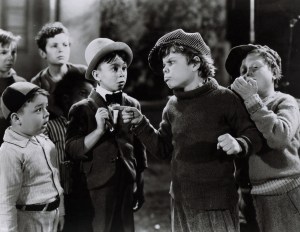Boston removed the Emancipation Group Memorial from Park Square on Dec. 29. The statue depicts a former slave kneeling before President Abraham Lincoln, and critics of the figure said it was demeaning and racist. The Boston Art Commission voted unanimously to take the statue down in June after a petition by social media influencer Tory Bullock gained thousands of signatures.
“It’s an amazing funeral, I’m here to provide a silent eulogy for this piece of artwork that’s been here for 141 years,” Bullock, a Dorchester native, told CBS Boston last week as the state was removed. “I’m proud, I’m Black, and I’m young. This image has been doing a lot of disservice to African-Americans in Boston and now it stops.”
Videos by PopCulture.com
The controversial statue of a slave crouching at the feet of President Lincoln was removed from Boston’s Park Square this morning. https://t.co/z5VkhBMQyN pic.twitter.com/byS92IVDmK
— WCVB-TV Boston (@WCVB) December 29, 2020
Boston Mayor Marty Walsh also supported the statue’s removal. “As expressed by so many during the public process this year, we fully agree that the statue should be relocated to a new publicly accessible location where its history and context can be better explained,” Walsh said in a statement. The statie is now in a South Boston facility until the new location will be announced. The Boston Art Commission also plans to add details about the statue and the process of removing it to its archives.
The statue was installed in 1879 after Boston Museum founder Moses Kimball donated the bronze recasting to the city, notes The Washington Post. The kneeling Black man in front of Lincoln is based on Archer Alexander, the last man captured under the Fugitive Slave Act reports NPR. It is a copy of Thomas Ball’s monument, known as the “Emancipation Group,” that still stands in Lincoln Park in Washington, D.C. The process of creating the statue dates back to the day after Lincoln’s death in 1865, when Charlotte Scott, a formerly enslaved woman, asked her employer to donate $5 to erect a Lincoln monument. After a fundraising campaign raised thousands of dollars, the statue’s design was overseen by a white-run group called the Western Sanitary Commission.
The original statue was dedicated in 1876 in Washington and drew criticism from Frederick Douglass. In a recently discovered letter, Douglass argued that Ball’s design did not “tell the whole truth” and “perhaps no one monument could be made to tell the whole truth of any subject which it might be designed to illustrate.” Douglass also thought memorials should show Black people in a new way. “The negro here, though rising, is still on his knees and nude,” Douglass wrote, notes NPR. “What I want to see before I die is a monument representing the negro, not couchant on his knees like a four-footed animal, but erect on his feet like a man.”
Moving the original statue in Washington could be complicated. It sits on land overseen by the National Park Service, not the District itself. Del. Eleanor Holmes Norton introduced legislation to move it to a museum and is told the Post she will see if the Park Service can move it without needing Congressional approval.
Most Viewed
-

LONDON, ENGLAND – APRIL 14: (LR) Jack O'Connell, Omar Benson Miller, Wunmi Mosaku, Michael B. Jordan, Hailee Steinfeld, Jayne Lawson, Miles Caton, Li Jun Li and Delroy Lindo attend attends the "Sinners" European Premiere at the Cineworld Leicester Square on April 14, 2025 in London, England. (Photo by Gareth Cattermole/Getty Images)







